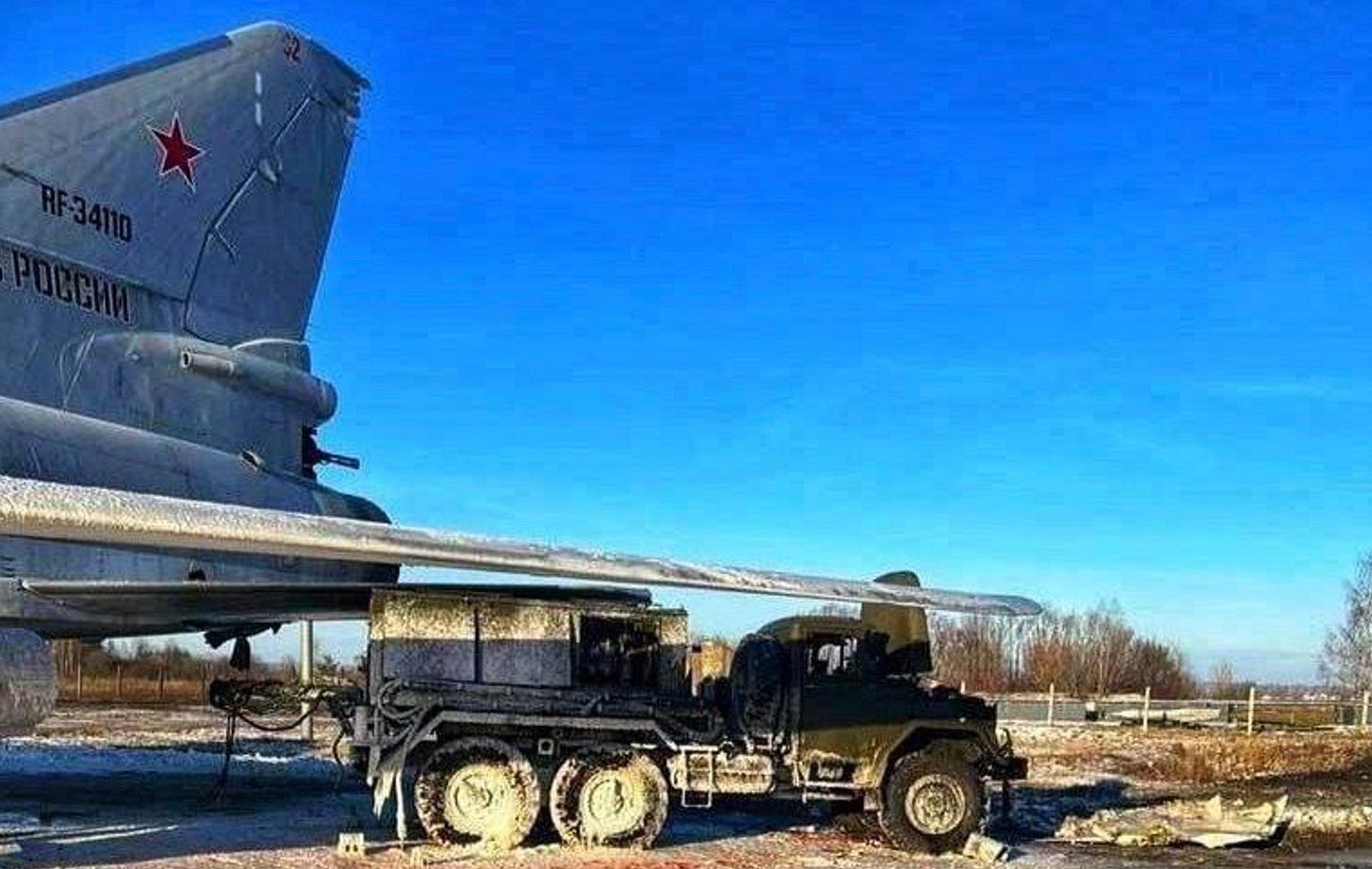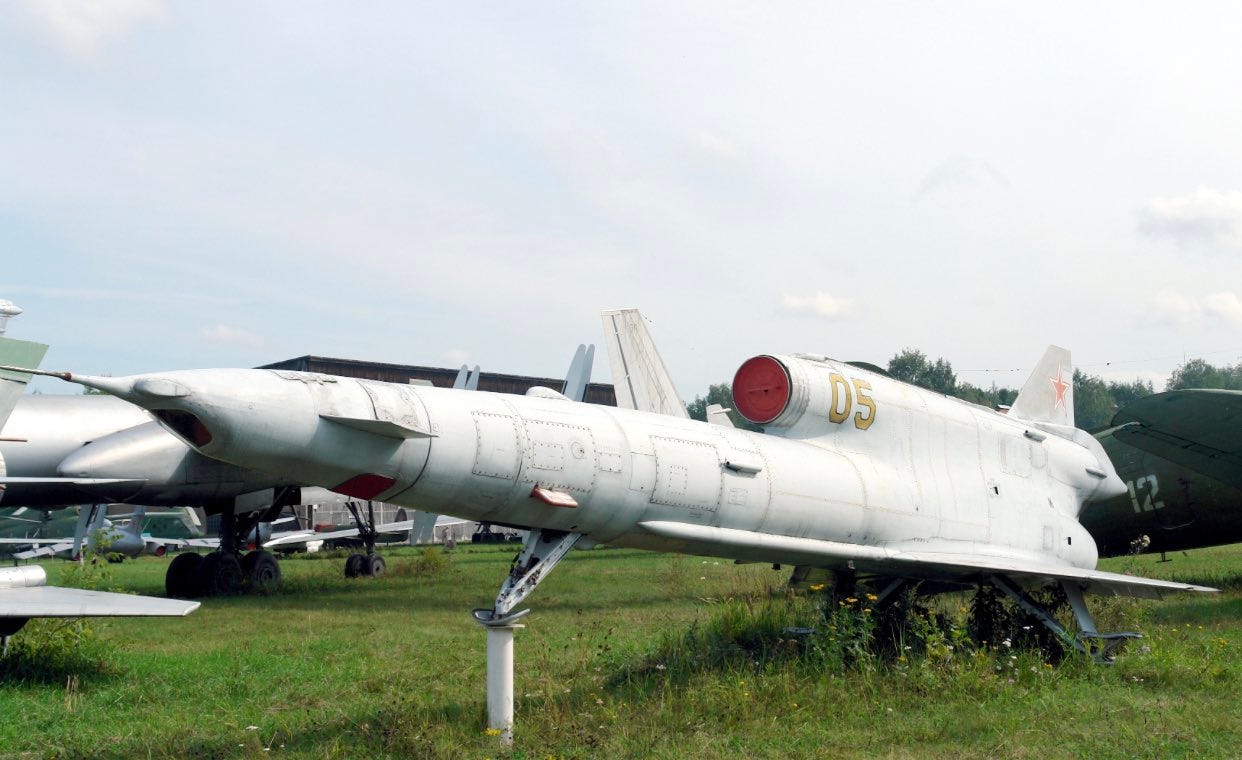Russian Airfield Attacks: Ukraine Strikes Back
The Ukrainian strikes on Russian airbases will have a strategic impact
Over the past weekend, short videos emerged that purported to show an attack on a Russian airbase located over 700 kilometres from its shared border with Ukraine. Subsequent videos and Telegram posts appeared to provide corroborating evidence that some kind of attack had been conducted against the Engels airfield, on the Volga River in southern Russia, and the Dyagilevo military base near the city of Ryazan.
As an article in Forbes notes, “in the social media era it is impossible to conceal such events”. The attacks were subsequently confirmed by the Russian Defence Ministry. They were also confirmed by an unnamed Ukrainian official, according to the New York Times.
The Russians described the weapons as “Soviet era drones”, that its forces had intercepted the drones, and that falling wreckage had slightly damaged two aircraft and killed three military personnel.
It is possible that the ‘Soviet era drones’ referred to are Tu-141s. These large, high speed reconnaissance drones were developed by, and served with, the Soviet military in the 1970s and 1980s. There have also been some (of a an unknown quantity) in service with the Ukrainian Armed Forces since 2014. With an operating range of about 1000 kilometres, these strikes would have been well within the capacity of the old drones.
Even at this early stage, we can draw some conclusions on the likely impact of these long-range Ukrainian strikes on the Russo-Ukraine War.
The first implication is that Ukraine clearly now has ability to undertake targeting at very long distances. The Engels air base is 700km from Ukraine. The Dyagilevo base is about 600 kilometres from Ukraine. By comparison, Moscow is around 640 kilometres from the Ukrainian city of Kharkiv. This doesn’t mean at all that Ukraine is going to attack Moscow. But it will cause some sleepless nights in the capital.
Despite the widespread availability of high-quality, commercial satellite images, targeting at this distance remains a difficult undertaking. The Ukrainian targeteers who conceived and planned this strike may even have had third party assistance in planning the attack, but this is not a certainty. A combination of open-source material, a knowledge of Russian air defence network gaps and on the ground ‘assistance’ may have sufficed to meet their needs to allow the Ukrainian weapons to penetrate Russian airspace, avoid air defences and get to their targets.
A second implication is that Ukraine is now adopting more active measures to reduce and prevent Russian missile strikes on its citizens and its civilian infrastructure. This is a logical next step. The recent Russian drone strikes, which have been more systemic and employed larger numbers of drones and missiles, have caused death and destruction and widespread power outages across Ukraine. Over the past weekend, the Russian launched an eight wave of strikes, which have become a signature tactic for the new Russian commander, General Surovikin. These strikes have also stopped the export of Ukrainian power, begun in July this year, to the EU. This denies Ukraine important export revenue.
As such, this is not only a military strike, but a political necessity. President Zelenskyy has constantly called on Western support to defend against these Russian strikes against civilian infrastructure. It is almost a certainty, given how civil-military relations work in democracies, that the President will have probably given final clearance for this strike because of the political and diplomatic sensitives involved. In some respects, he is now taking the fight to Putin - against military targets that have directly attacked Ukraine.
It is not, as some are sure to claim, an escalation. But it is a necessary political and military measure for Ukraine to limit the humanitarian harm of Russia’s brutal drone and missile attacks.
While Lawrence Freedman has noted that because Ukraine won’t strike Russian civilian targets Russia has an asymmetric advantage with its missile attacks, the Ukrainians have decided to change the calculous of Russian General Surovikin. The strikes against the Russian air bases is Ukraine’s way of saying that the Russians don’t have the asymmetric advantage with their long range missiles that they think they have.
It should be said at this point that the Russian airbase is a legitimate target of war for the Ukrainians. The aircraft and crews base there have conducted military operations against Ukraine and its people.
A third implication of the strike concerns Russian air defences, where was the vaunted Russian air defense network that worried planners throughout the Cold War? In his 1998 book The Cold War: A Military History, author David Miller wrote that:
In contrast to NATO countries, the Soviet Union gave high priority to air defence from the start of the Cold War, and in particular missiles, and proceeded to follow a coherent development plan throughout…The Soviets claimed that their goal was to produce an air-defence ‘umbrella’ over their forces, and in this they substantially succeeded.
Just as strikes against the Kerch Bridge and other Crimea targets have demonstrated, Russia’s defence against a determined and creative adversary have been shown to be porous. American scholar Rob Lee has noted:
Tu-141 are 1970s technology. If Russian radar and air defenses could not defeat a Tu-141 that flew hundreds of miles from hitting its main airbase for its strategic bombers in a war setting, that doesn't bode well for its ability to stop a mass cruise missile strike.
A fourth implication is that this is a psychological blow against Russia. An attack on military targets deep inside Russia’s borders will cause consternation among a public who thought they were largely insulated from the effects of the war (besides mobilisation, that is). It will be interesting to see the Russian propaganda machine’s reaction. Be sure to follow Julia Davis on Twitter and YouTube, who monitors Russian media and particularly Russian State TV, to observe the Russian reactions.
A fifth implication of the air base strikes is that the Ukrainians, as they done throughout this war, will learn from this and adapt. While the recent report on preliminary lessons from the war by the Royal United Services Institute notes that Russia has also been adaptive throughout their invasion, the Ukrainians have demonstrated far more initiative and creativity in their military and information operations. I explored this adaptation competition – the Adaptation Battle – in a recent article for Engelsberg Ideas.
This long-range strike by the Ukrainians is unlikely to be the last time they attempt such an attack over long distances against Russian strategic forces. They will have observed Russian air defence reactions to the penetration of the drones into Russian airspace, the reaction at the bases, and the subsequent Russian media and propaganda responses. They will hone their targeting processes, their intelligence collection and ensure they either develop or procure the necessary weapons for such missions.
As a consequence, a sixth implication of the raid may be a reorientation of Russian military effort. The Russian military, probably at the direction of the President, will need to rethink its defensive posture much further from Ukraine’s borders as a result of these strikes. There are many airfields, command hubs and logistics much closer to Ukraine than these two airfields which the Ukrainians can now hold at risk.
While only around 150 of these Tu-141 reconnaissance drones were built, the Ukrainians are sure to have at least a few more held in reserve for when the right target, at the right time, emerges for Ukraine to generate the right strategic impact. It also bears mentioning that strikes like these will also inform the development, testing, targeting and use of other long range strike capabilities for the Ukrainians. This may include the longer range drones that have been the subject of speculation in the past several months.
These strikes are another demonstration of Ukraine’s confidence and will. It also shows that they will leverage their momentum in defending their nation to continue hitting the Russians where it hurts over winter. Ukraine has fought hard, and suffered much, to seize the initiative in this war. Once again, they have made clear that they intend to sustain and exploit this initiative at every level at which this war is being fought.
Book quote: David Miller, The Cold War: A Military History, John Murray publishers, London, 1998, p. 288-289.
Image credits: The Ukrainian Air Force, Ian Matveev, Google Earth, Media Vet, War Is Boring, Rob Lee





In addition to the very valid points made in the article, the Ukrainian strikes on the two airbases could subtlety degrade Russian attacks on Ukrainian infrastructure by providing a compelling disincentive for Russian base commanders and other decision makers to allow their bases to be used as primary launch points for further missile strikes into Ukraine. As well trained military bureaucrats, they may be loathe to expose their bases/equipment/personnel to Ukrainian retribution. My understanding is that the Russian system is asymmetrically inclined to punish failures over rewarding successes, and I doubt that any Russian senior military officer has failed to learn that lesson well. While they are unlikely to directly or obviously disobey orders, they may well be inclined to find ways to avoid highlighting their facilities for Ukrainian retribution and open themselves up for criticism from above for damage inflicted by Ukrainian counterstrikes. For example, operationally available launch aircraft counts may decline significantly in the near term. Similarly, the Ukrainian strikes may provide a further disincentive for Belarus to play too obvious a role in attacking Ukrainian infrastructure, much less more active support for the Russian military adventure going forward.
Wrong or right, I’d plant one the Kremlin's doorstep. Or better yet a Moscow power station.